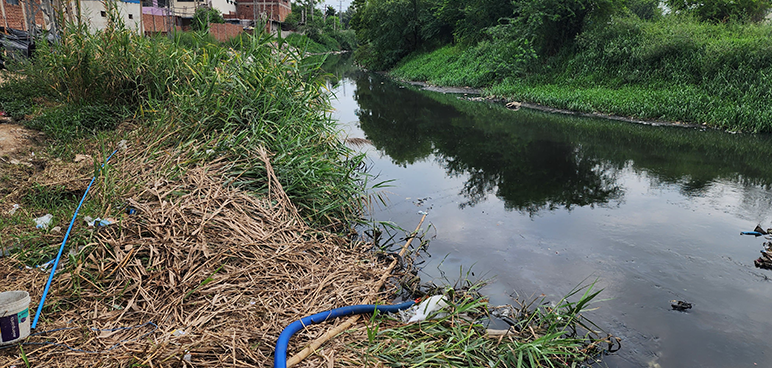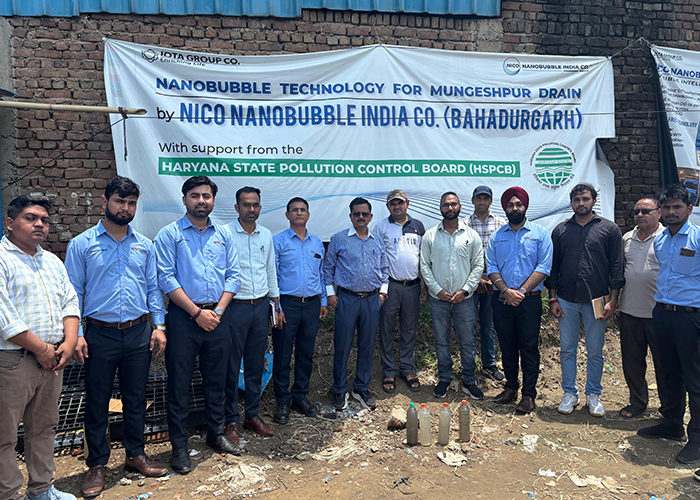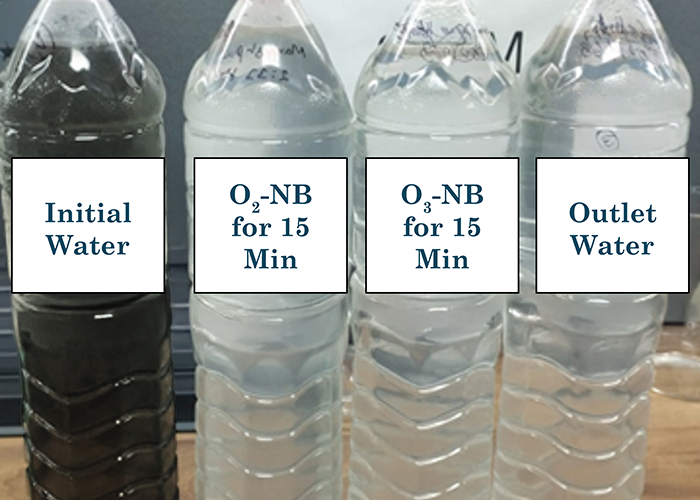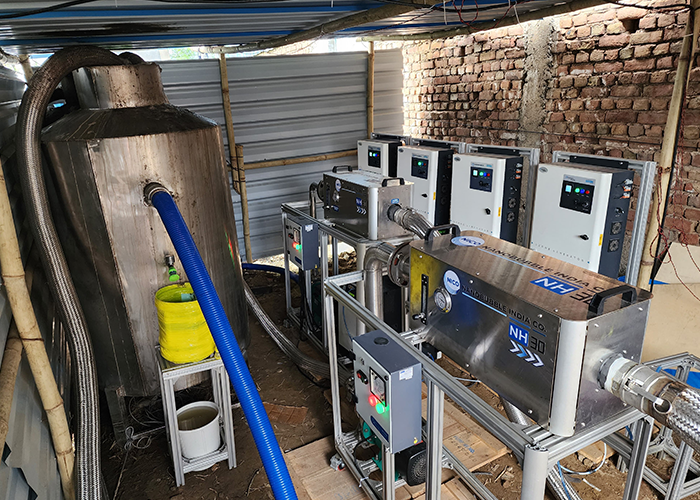Mungeshpur Drain (W/ HARYANA STATE POLLUTION CONTROL BOARD (HSPCB), HARYANA)



The Mungeshpur Drain, located in Haryana, is a critically polluted watercourse primarily receiving municipal and industrial effluents, resulting in severe environmental degradation. Baseline analyses indicated biochemical oxygen demand (BOD) levels (~38 mg/L), chemical oxygen demand (COD) (~280 mg/L), dissolved oxygen (DO) (~0.8 mg/L), ammonia (~ 4.2 mg/L), high faecal coliform presence, and blackish septic conditions.
To address these challenges sustainably, the team at NICO implemented an innovative nanobubble (NB) water treatment technology. This technology, characterized by ultra-fine bubbles (<200 nm) and enhanced gas solubility, was strategically deployed through a side-stream abstraction and closed-loop polishing strategy.
| Parameter | Before Treatment | After Treatment |
|---|---|---|
| BOD (mg/L) | ~ 38 | ≤ 10 |
| COD (mg/L) | ~ 280 | ≤ 50 |
| DO (mg/L) | ~ 0.8 | ≥ 5.5 |
| AMMONIA (mg/L) | ~ 4.2 | 0.05 |
| COLOR/ODOR | BLACKISH, SEPTIC | CLEAR, ODOR-FREE |
| PATHOGENS | FAECAL COLIFORM PRESENCE | SIGNIFICANTLY REDUCED |
| SLUDGE VOLUME | HIGH | REDUCED DUE TO AEROBIC DIGESTION |



This project leverages advanced nanotechnology and serves as a scalable and replicable model for polluted waterways nationwide, clearly demonstrating the pivotal role of innovative technologies and robust quality processes in achieving sustainable environmental restoration.